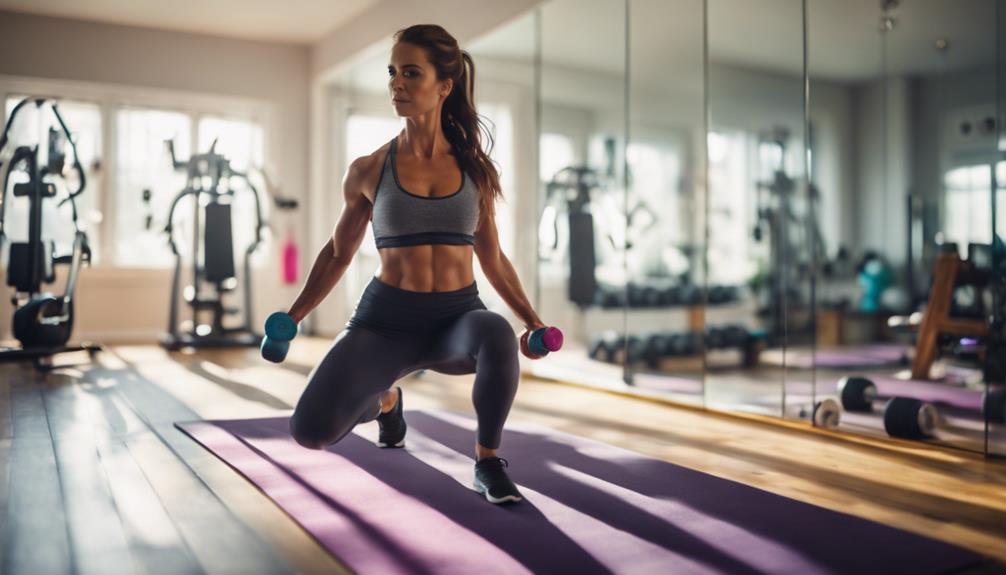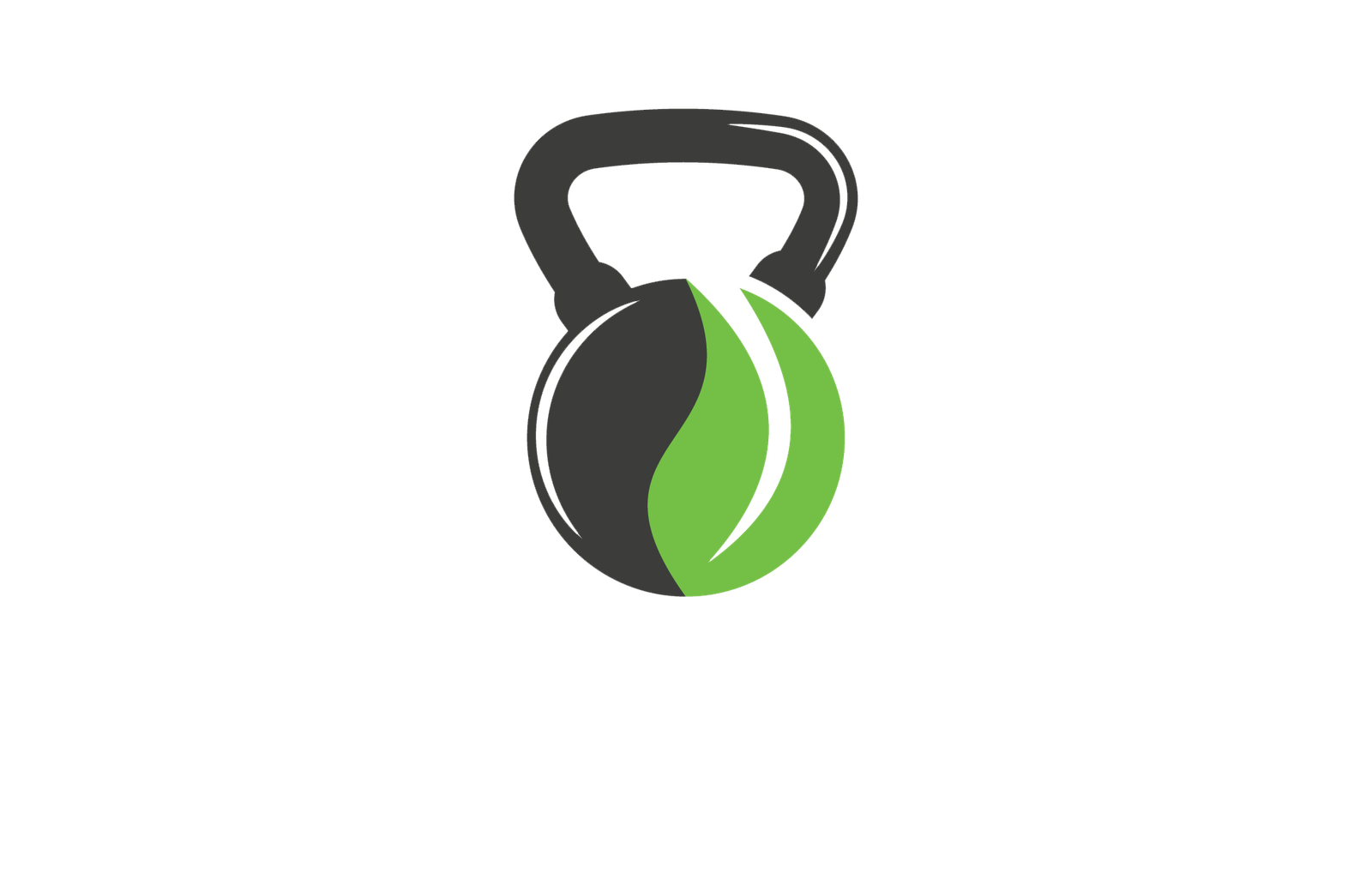Don't miss our holiday offer - 20% OFF!

Creating Effective Cardio Circuits for Home Fitness
Achieve a full-body workout at home with cardio circuits that boost metabolism, build endurance, and maximize caloric burn in just a few minutes a day.
We're about to transform our homes into fitness havens with effective cardio circuits! To get started, we set specific, measurable, and attainable goals, identifying what drives our motivation. We choose exercises that raise our heart rate, build endurance, and boost metabolism, considering our fitness level and muscle imbalances. Then, we design a balanced circuit with 3-5 stations, incorporating cardio, strength training, and flexibility exercises. By applying HIIT principles and incorporating high-intensity intervals, we maximize caloric burn and energy expenditure. Now that we've laid the foundation, let's dive deeper into creating a well-rounded home fitness routine that yields impressive results!
Key Takeaways
- Select exercises that raise heart rate, build endurance, and boost metabolism, such as squats, lunges, and burpees.
- Design a balanced circuit that targets different muscle groups and cardiovascular exercise, with 3-5 stations for a full-body workout.
- Incorporate high-intensity intervals (HIIT) with 20-30 minutes of high-intensity exercise, 2-3 times a week, to maximize caloric burn.
- Strategically select and arrange equipment, such as adjustable dumbbells and foldable exercise bikes, to maximize exercise options while minimizing clutter.
- Create a functional and motivating workout space by optimizing equipment, lighting, and ventilation to facilitate a safe and effective workout.
Setting Your Cardio Goals
As we begin our cardio journey, let's define what we want to achieve, because setting specific, measurable, and attainable goals is vital to our success. We must establish a clear direction, identifying what drives us and what we hope to accomplish. This mindset development is vital, as it sets the tone for our entire fitness journey. By doing so, we take ownership of our goals, holding ourselves accountable for the hard work and dedication required to reach them.
As we set our goals, let's make sure they're realistic and achievable, yet still challenging enough to push us out of our comfort zones. We should also identify our why – the underlying motivation behind our goals. Is it to feel more energetic, to look good for a special occasion, or to improve our overall health? Whatever the reason, it's vital to connect with it on a deep level, as it will serve as our driving force when the going gets tough.
Choosing the Right Exercises
With our goals in mind, we're ready to select exercises that will help us reach them, and the key is to choose a mix that raises our heart rate, builds endurance, and boosts our metabolism. We want exercises that work multiple muscle groups at once, saving us time and energy.
When selecting exercises, we need to take into account our fitness level and any muscle imbalances we may have. For example, if we have weak glutes, we'll want to choose exercises that target this area to prevent muscle imbalance. We should also bear in mind exercise modifications that suit our fitness level. If we're beginners, we may want to start with lower-impact exercises and gradually increase the intensity.
Here are some tips to keep in mind when choosing exercises:
- Choose compound exercises: Exercises that work multiple muscle groups at once, such as squats and lunges.
- Select exercises that raise our heart rate: Exercises like jumping jacks, burpees, and mountain climbers are great for getting our heart rate up.
- Incorporate exercises that improve flexibility: Exercises like leg swings and arm circles help improve our flexibility and range of motion.
- Don't forget to include restorative exercises: Exercises like stretching and yoga can help our bodies recover from intense workouts.
Designing a Balanced Circuit
As we move forward in creating effective cardio circuits, we're going to focus on designing a balanced circuit that will get our clients the results they're looking for. To do this, we need to get the structure of our workout just right, and that means considering the essentials of workout structure that will keep our clients engaged and motivated. By applying the right exercise selection criteria, we can create a circuit that's both challenging and enjoyable, and that's exactly what we're going to explore next.
Workout Structure Essentials
We design a balanced circuit by identifying our fitness goals and dividing the workout into three to five stations that target different muscle groups and cardiovascular exercise. This structure allows us to create a well-rounded workout that improves our overall fitness. A balanced circuit should include a mix of cardio exercises, strength training, and flexibility exercises to guarantee we're working our entire body.
To facilitate a smooth and effective workout, we need to examine the following essential elements:
- Warm-up strategies: A 5-10 minute dynamic warm-up prepares our muscles for the workout ahead, reducing the risk of injury and improving performance.
- Station duration and rest time: We need to allocate sufficient time for each station and allow for adequate rest time to avoid fatigue and injury.
- Switching time: We should minimize switching time between stations to keep our heart rate up and maintain momentum.
- Cool-down techniques: A 5-10 minute cool-down helps our body recover, reducing muscle soreness and improving flexibility.
Exercise Selection Criteria
By incorporating a mix of exercises that challenge our cardiovascular endurance, strength, and flexibility, we can create a balanced circuit that targets our entire body. This is essential because it helps prevent muscle imbalances, which can lead to injuries and poor overall performance. When selecting exercises, we need to weigh our fitness goals and current fitness level. We should include a mix of compound exercises like squats, lunges, and deadlifts that work multiple muscle groups at once, as well as isolation exercises like bicep curls and tricep extensions that target specific muscles. We should also include exercises that improve our flexibility and mobility, such as leg swings and arm circles. Additionally, we should take into account exercise modifications that cater to our fitness level. For example, if we're beginners, we can start with modified versions of exercises like push-ups on our knees instead of our toes. By incorporating these exercises and modifications, we can create a well-rounded circuit that challenges us and helps us achieve our fitness goals.
Incorporating High-Intensity Intervals
As we move forward in creating effective cardio circuits, we're going to focus on incorporating high-intensity intervals to take our workouts to the next level. By applying HIIT principles, strategically timing our intervals, and maximizing caloric burn, we can create circuits that are both challenging and rewarding. Let's explore these key points to optimize our cardio circuits and achieve our fitness goals.
HIIT Principles Applied
Applying HIIT principles to our cardio circuits dramatically amplifies their effectiveness, catapulting us toward our fitness goals in record time. By incorporating high-intensity intervals, we can break free from the Cardio Myth that steady-state cardio is the only way to achieve results. In reality, HIIT workouts can be more effective in less time, and they're perfect for busy home fitness enthusiasts.
To make the most of HIIT, we need to understand our Heart Rate Zones. When we push ourselves to 80-90% of our maximum heart rate, we enter the anaerobic zone, where the magic happens. Here are the key takeaways to keep in mind:
- Short bursts of intensity: Work at maximum capacity for 20-30 seconds.
- Active recovery: Follow each burst with 1-2 minutes of low-intensity exercise.
- Repeat for 15-20 minutes: Aim for 3-5 rounds of high-intensity intervals.
- Cool down and stretch: Finish with 5-10 minutes of stretching to aid in recovery.
Interval Timing Strategies
We can turbocharge our cardio circuits by strategically incorporating high-intensity intervals, carefully calibrating the timing to maximize our efforts and ignite our metabolism. By incorporating interval timing strategies, we can take our workouts to the next level.
One effective approach is to use heart rate windows, where we push ourselves to reach a target heart rate zone during high-intensity intervals, and then recover during rest-based intervals. This allows us to optimize our energy expenditure and maximize caloric burn.
Here's an example of how we can structure our interval timing:
| Interval Type | Duration | Rest Time |
|---|---|---|
| High-Intensity | 30 seconds | 30 seconds |
| Moderate-Intensity | 1 minute | 1 minute |
| Low-Intensity | 2 minutes | 2 minutes |
| Active Recovery | 3 minutes | None |
Maximum Caloric Burn
By incorporating high-intensity intervals into our cardio circuits, we can substantially boost our caloric burn, pushing our bodies to new heights of fat-torching efficiency. This approach not only increases our caloric expenditure during exercise but also enhances our resting metabolic rate, meaning we'll burn more calories at rest. To maximize our caloric burn, we need to focus on the following key factors:
- Intensity: Push ourselves to the limit with all-out effort intervals.
- Duration: Aim for 20-30 minutes of high-intensity exercise to maximize caloric burn.
- Frequency: Incorporate high-intensity intervals 2-3 times a week for peak results.
- Recovery: Prioritize post-workout nutrition to aid in recovery and support muscle growth.
Adding Strength Training Elements
As we design our cardio circuits, incorporating strength training elements can substantially boost their effectiveness and challenge our bodies in new ways. By adding strength training exercises, we can create a more well-rounded workout that targets multiple aspects of fitness. This approach helps prevent muscle imbalance, where some muscles become overdeveloped while others remain underdeveloped. When we incorporate strength training into our cardio circuits, we can engage in functional movements that mimic daily activities, such as squats, lunges, and step-ups. These exercises improve our overall functional fitness, allowing us to perform daily tasks with more ease and efficiency. Additionally, strength training elements can increase our metabolism, helping us burn more calories at rest, even after our workout is complete. By combining cardio and strength training, we can create a powerful workout that targets our entire body, leaving us feeling stronger, leaner, and more energized.
Creating a Safe Workout Space
Clear the floor of any obstacles or tripping hazards to facilitate a safe and distraction-free workout space that allows us to focus on our fitness goals. We want to create an environment that promotes movement and exercise, not one that poses a risk to our safety.
When setting up our workout space, we should consider a few key factors to facilitate a safe and effective workout. Here are some essential considerations:
- Flooring Options: Choose a flooring material that provides traction and cushioning, such as a yoga mat or a rubber floor.
- Lighting Considerations: Establish the space is well-lit, with minimal glare or shadows that could obstruct our movement.
- Ventilation: Maintain a well-ventilated area to prevent overheating and promote airflow.
- Electrical Safety: Keep electrical cords and outlets out of the way to avoid tripping or electrical shock.
Maximizing Space and Equipment
We'll optimize our workout space by strategically selecting and arranging equipment to maximize our exercise options while minimizing clutter and obstacles. By doing so, we'll create a safe and efficient environment that allows us to focus on our cardio circuit workouts. When it comes to equipment, we'll choose multi-functional pieces that serve more than one purpose, such as a adjustable dumbbell set or a foldable exercise bike. This will help reduce clutter and free up valuable space.
Optimizing furniture is also essential in maximizing our workout space. We'll select compact and space-saving options, like a wall-mounted mirror or a foldable exercise mat. By doing so, we'll create a more open and airy feel, allowing us to move freely and comfortably during our workouts. Additionally, we'll utilize corners by placing smaller equipment, such as resistance bands or medicine balls, in these often-wasted spaces. By thinking strategically about our equipment and furniture, we'll create a workout space that's both functional and motivating.
Putting It All Together Successfully
Now that we've optimized our workout space, it's time to tie everything together by designing a cardio circuit that's both challenging and engaging. We've got our equipment, we've got our space, and now it's time to create a workout that will keep us motivated and moving.
To do this, we need to examine a few key factors. Here are some essentials to keep in mind:
- Variety is key: Mix up your exercises to keep your workout interesting and prevent plateaus.
- Music makes a difference: Create a playlist that pumps you up and keeps you moving.
- Workout buddies are a bonus: Having someone to hold you accountable and share the experience with can be a great motivator.
- Rest when you need to: Don't be afraid to take a break when you need it – it's all about finding a sustainable pace.
Frequently Asked Questions
How Long Should I Rest Between Cardio Circuit Workouts?
"We typically rest for 48-72 hours between intense cardio circuit workouts, allowing our bodies adequate rest duration for workout recovery, ensuring we're refreshed and ready to crush the next session."
Can I Do Cardio Circuits With a Friend for Motivation?
"When the going gets tough, we get going – and having a workout buddy makes all the difference! We find that having an accountability partner motivates us to push harder, and cardio circuits with a friend are a blast, keeping us on track and inspired."
Do I Need a Doctor's Approval Before Starting a New Exercise Routine?
Before starting any new exercise routine, we make sure to get medical clearance from our doctor, especially if we have any health concerns, and undergo a thorough health screening to guarantee our safety and success.
How Often Should I Change My Cardio Circuit Workout Routine?
"We change our cardio circuit workout routine every 4-6 weeks to avoid plateaus; tracking progress helps us identify when it's time to mix things up and challenge ourselves to reach new fitness milestones."
Can I Do Cardio Circuits With Injuries or Chronic Health Conditions?
"We adapt to our bodies' needs, modifying exercises to accommodate injuries or chronic health conditions. Gentle routines help us progress safely, proving that fitness is accessible to everyone, regardless of limitations."
Conclusion
We've got the blueprint for a killer cardio circuit, and now it's time to put it into action! Our home fitness space is transformed, like a blank canvas brought to life with vibrant colors, as we sweat, push, and power through our customized routine. With every rep, we're one step closer to our goals. Let's get moving, stay consistent, and watch our fitness dreams take shape!



